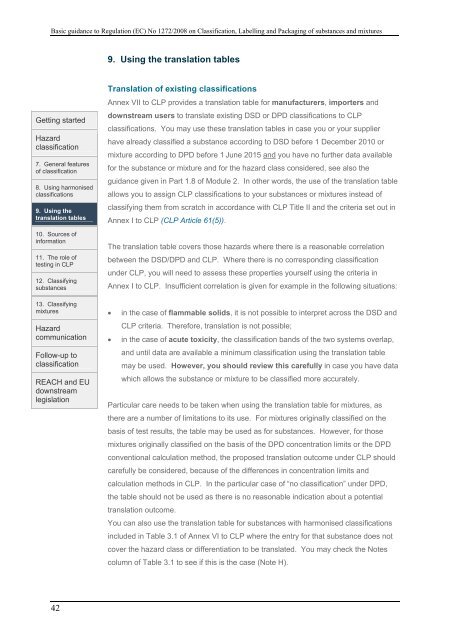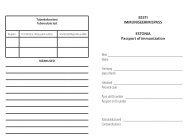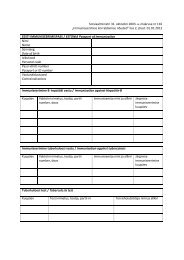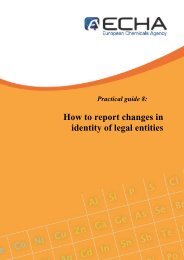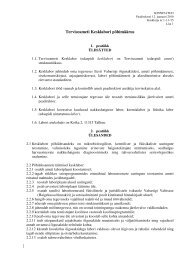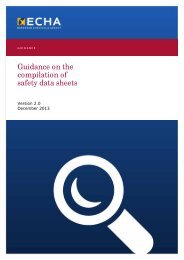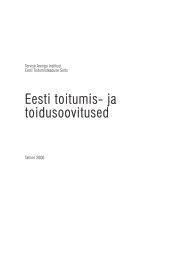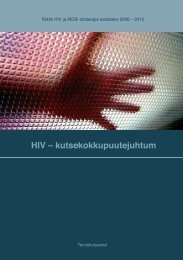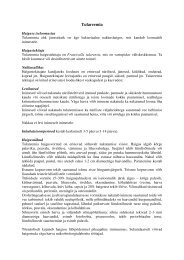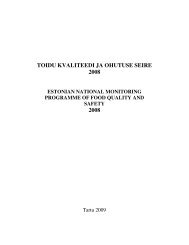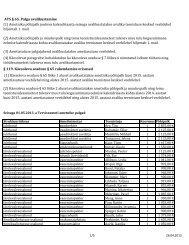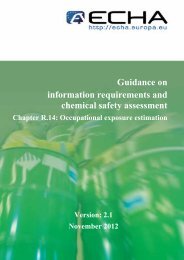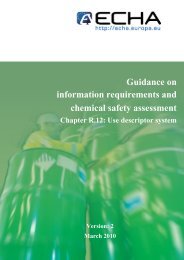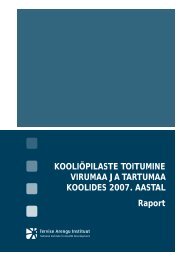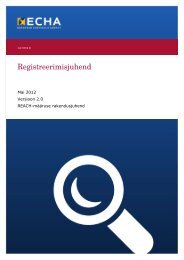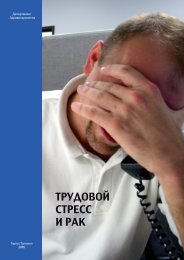Introductory Guidance on the CLP Regulation - ECHA - Europa
Introductory Guidance on the CLP Regulation - ECHA - Europa
Introductory Guidance on the CLP Regulation - ECHA - Europa
You also want an ePaper? Increase the reach of your titles
YUMPU automatically turns print PDFs into web optimized ePapers that Google loves.
Basic guidance to Regulati<strong>on</strong> (EC) No 1272/2008 <strong>on</strong> Classificati<strong>on</strong>, Labelling and Packaging of substances and mixtures<br />
9. Using <strong>the</strong> translati<strong>on</strong> tables<br />
Getting started<br />
Hazard<br />
classificati<strong>on</strong><br />
7. General features<br />
of classificati<strong>on</strong><br />
8. Using harm<strong>on</strong>ised<br />
classificati<strong>on</strong>s<br />
9. Using <strong>the</strong><br />
translati<strong>on</strong> tables<br />
10. Sources of<br />
informati<strong>on</strong><br />
11. The role of<br />
testing in <strong>CLP</strong><br />
12. Classifying<br />
substances<br />
13. Classifying<br />
mixtures<br />
Hazard<br />
communicati<strong>on</strong><br />
Follow-up to<br />
classificati<strong>on</strong><br />
REACH and EU<br />
downstream<br />
legislati<strong>on</strong><br />
Translati<strong>on</strong> of existing classificati<strong>on</strong>s<br />
Annex VII to <strong>CLP</strong> provides a translati<strong>on</strong> table for manufacturers, importers and<br />
downstream users to translate existing DSD or DPD classificati<strong>on</strong>s to <strong>CLP</strong><br />
classificati<strong>on</strong>s. You may use <strong>the</strong>se translati<strong>on</strong> tables in case you or your supplier<br />
have already classified a substance according to DSD before 1 December 2010 or<br />
mixture according to DPD before 1 June 2015 and you have no fur<strong>the</strong>r data available<br />
for <strong>the</strong> substance or mixture and for <strong>the</strong> hazard class c<strong>on</strong>sidered, see also <strong>the</strong><br />
guidance given in Part 1.8 of Module 2. In o<strong>the</strong>r words, <strong>the</strong> use of <strong>the</strong> translati<strong>on</strong> table<br />
allows you to assign <strong>CLP</strong> classificati<strong>on</strong>s to your substances or mixtures instead of<br />
classifying <strong>the</strong>m from scratch in accordance with <strong>CLP</strong> Title II and <strong>the</strong> criteria set out in<br />
Annex I to <strong>CLP</strong> (<strong>CLP</strong> Article 61(5)).<br />
The translati<strong>on</strong> table covers those hazards where <strong>the</strong>re is a reas<strong>on</strong>able correlati<strong>on</strong><br />
between <strong>the</strong> DSD/DPD and <strong>CLP</strong>. Where <strong>the</strong>re is no corresp<strong>on</strong>ding classificati<strong>on</strong><br />
under <strong>CLP</strong>, you will need to assess <strong>the</strong>se properties yourself using <strong>the</strong> criteria in<br />
Annex I to <strong>CLP</strong>. Insufficient correlati<strong>on</strong> is given for example in <strong>the</strong> following situati<strong>on</strong>s:<br />
• in <strong>the</strong> case of flammable solids, it is not possible to interpret across <strong>the</strong> DSD and<br />
<strong>CLP</strong> criteria. Therefore, translati<strong>on</strong> is not possible;<br />
• in <strong>the</strong> case of acute toxicity, <strong>the</strong> classificati<strong>on</strong> bands of <strong>the</strong> two systems overlap,<br />
and until data are available a minimum classificati<strong>on</strong> using <strong>the</strong> translati<strong>on</strong> table<br />
may be used. However, you should review this carefully in case you have data<br />
which allows <strong>the</strong> substance or mixture to be classified more accurately.<br />
Particular care needs to be taken when using <strong>the</strong> translati<strong>on</strong> table for mixtures, as<br />
<strong>the</strong>re are a number of limitati<strong>on</strong>s to its use. For mixtures originally classified <strong>on</strong> <strong>the</strong><br />
basis of test results, <strong>the</strong> table may be used as for substances. However, for those<br />
mixtures originally classified <strong>on</strong> <strong>the</strong> basis of <strong>the</strong> DPD c<strong>on</strong>centrati<strong>on</strong> limits or <strong>the</strong> DPD<br />
c<strong>on</strong>venti<strong>on</strong>al calculati<strong>on</strong> method, <strong>the</strong> proposed translati<strong>on</strong> outcome under <strong>CLP</strong> should<br />
carefully be c<strong>on</strong>sidered, because of <strong>the</strong> differences in c<strong>on</strong>centrati<strong>on</strong> limits and<br />
calculati<strong>on</strong> methods in <strong>CLP</strong>. In <strong>the</strong> particular case of “no classificati<strong>on</strong>” under DPD,<br />
<strong>the</strong> table should not be used as <strong>the</strong>re is no reas<strong>on</strong>able indicati<strong>on</strong> about a potential<br />
translati<strong>on</strong> outcome.<br />
You can also use <strong>the</strong> translati<strong>on</strong> table for substances with harm<strong>on</strong>ised classificati<strong>on</strong>s<br />
included in Table 3.1 of Annex VI to <strong>CLP</strong> where <strong>the</strong> entry for that substance does not<br />
cover <strong>the</strong> hazard class or differentiati<strong>on</strong> to be translated. You may check <strong>the</strong> Notes<br />
column of Table 3.1 to see if this is <strong>the</strong> case (Note H).<br />
42


